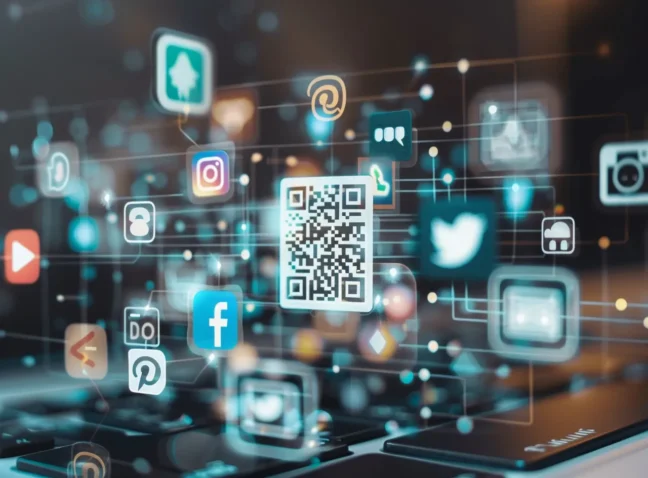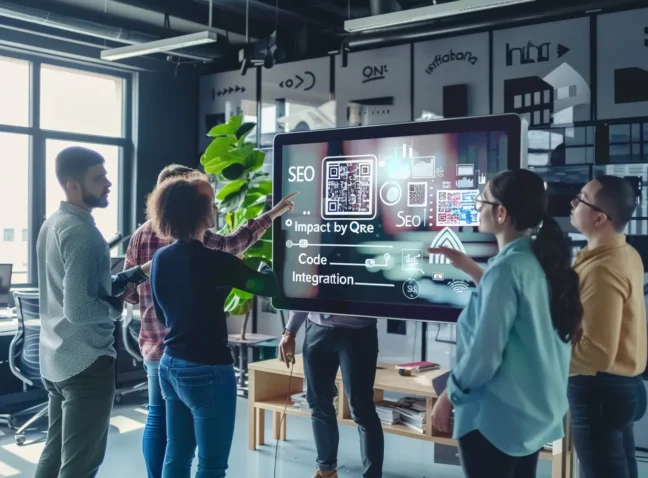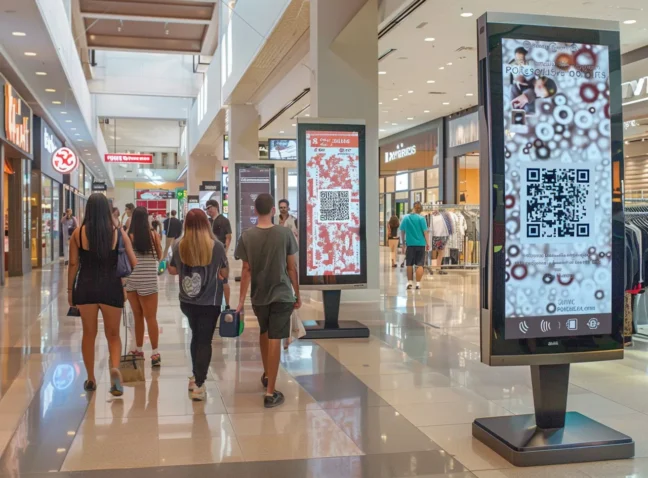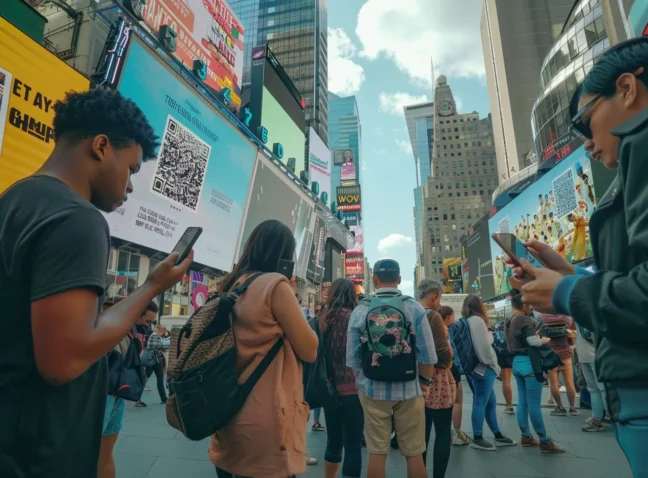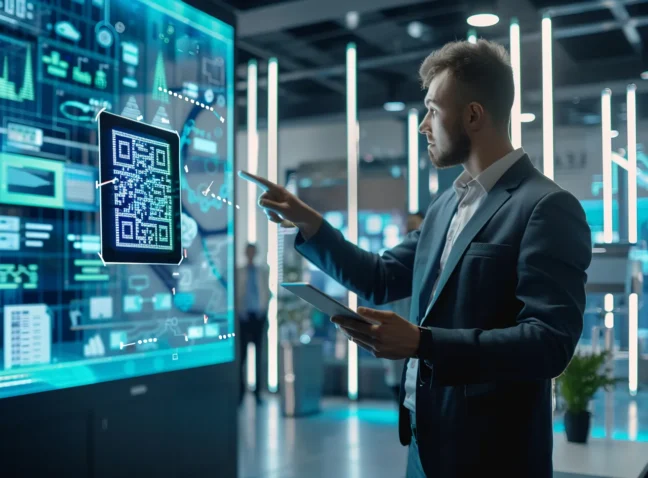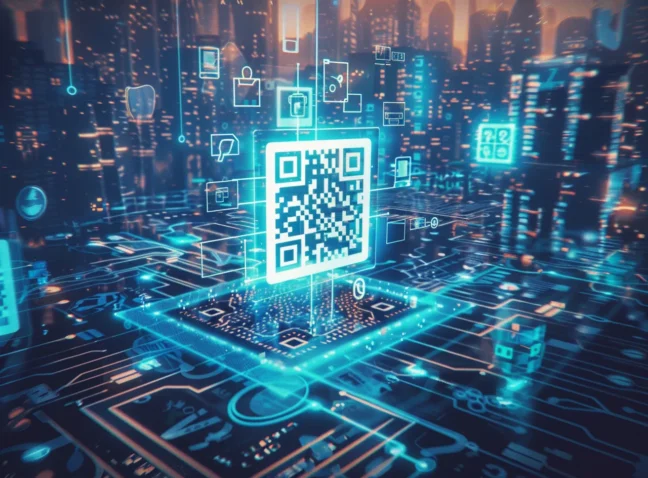Zelle is transforming the way we exchange money, making it faster and more convenient than ever before. With its integration of QR codes, sending and receiving payments is as simple as snapping a picture. This innovation offers a level of security and speed that stands out in the digital payment space, ensuring your transactions are both safe and instantaneous. Whether you’re splitting a dinner bill or paying your share of the rent, Zelle’s QR codes are designed to make financial interactions quick and comfy. Curious about how this technology can enhance your daily transactions? Keep reading to find out how you can tap into this efficient payment method.
Why Choose QR Codes for Zelle Transactions?
QR Codes for Zelle heighten transaction convenience and security within the US cashless payment landscape. Integrating QR codes into Zelle signifies a notable leap in digital payment tech, providing users a smooth, contactless money transfer option. This advancement meets the rising demand for safer, faster transactions amid health concerns and evolving retail practices.
QR Codes for Zelle: Heightening Transaction Security and Convenience
Zelle emerges as a standout player in the bustling digital payment sphere, offering a swift, cost-free, and secure platform for money transfers. Backed by major US banks and owned by Early Warning Services LLC, Zelle seamlessly links over a thousand financial institutions, enabling users to send and receive money within minutes. What sets Zelle apart is its intuitive interface, widely embraced by banks, making it an appealing choice for a diverse array of consumers and businesses alike.
In today’s digital landscape, the utilization of QR codes for payments has surged dramatically. Reports from Forbes indicate that 73% of Americans have embraced QR codes, especially with the surge in contactless payments. CNBC forecasts QR code transactions in the US to surpass $2 trillion by 2025, underlining their growing significance. Moreover, studies from Business Insider reveal that 86% of consumers perceive QR codes as efficient transaction facilitators, while The Wall Street Journal highlights a 40% surge in QR code payments at restaurants due to health concerns. Additionally, Reuters reports significantly lower QR code payment fraud rates compared to traditional card payments, promising enhanced security for users.
Pros of QR Codes for Zelle: Simple and Effective
Implementing QR codes for digital payment platforms like Zelle offers a seamless and secure way to manage transactions. This technology has quickly become a go-to method for many, merging convenience with reliability. As contactless payments gain momentum, QR codes stand out for their ease of use and the added security they bring to digital transactions. Let’s delve into the statistics that highlight the impact of QR codes on the payment industry:
- A staggering 73% of Americans have now adopted QR codes for executing payment transactions, a trend significantly accelerated by the global shift towards contactless payment methods. This widespread acceptance underscores the technology’s role in modernizing payment experiences.
- The financial landscape is witnessing a monumental shift with QR code transactions in the United States on track to surpass the $2 trillion mark by the year 2025. This projection not only showcases the technology’s growing footprint in digital payments but also signals a broader adoption across various sectors.
- An overwhelming 86% of consumers now view QR codes as a pivotal tool in facilitating transactions, pointing to a remarkable consensus on the efficiency and user-friendliness of QR code payments. This perception is instrumental in driving the technology’s integration into everyday commerce.
- In the hospitality sector, particularly within restaurants, the adoption of QR code payments has seen a 40% increase over the last year. This surge is largely attributed to the demand for safer, touchless transaction options in the wake of health and safety concerns, highlighting the technology’s adaptability to current global challenges.
- When it comes to security, QR code payment methods are proving to be a safer alternative to traditional card payments. With significantly lower fraud rates reported among QR code transactions, users can enjoy a heightened sense of security, further encouraging the shift towards digital payment solutions.
Potential Risks of QR Codes for Zelle Payments: Security Concerns
In delving into QR codes for the synonymous Zelle, we find a blend of advantages and considerations. While these codes offer a convenient payment avenue, we can’t overlook potential hurdles. Firstly, there’s the issue of inclusivity; not all individuals possess smartphones equipped for QR scanning, posing a barrier for certain demographics. Moreover, security is a key concern. QR codes may be susceptible to tampering, necessitating vigilance from users to thwart fraudulent activities.
Furthermore, ensuring widespread understanding and acceptance demands substantial educational endeavors. Businesses and consumers alike must grasp the ins and outs of QR-based transactions. By addressing these challenges, we can foster a more inclusive and secure payment landscape, where the benefits of QR technology can be enjoyed by all.
QR Codes for Zelle: Exploring the Challenges
In the digital age, QR codes have emerged as a pivotal component of the Zelle industry, streamlining transactions and offering a layer of convenience previously unattainable. Yet, this innovation is not without its pitfalls, particularly in the realm of cybersecurity. Concerns around the security of QR code transactions have become increasingly prevalent, casting a shadow over their efficiency and convenience. To ensure the continued success and reliability of digital payment methods like Zelle, it’s imperative to confront and mitigate these security challenges head-on:
- A notable percentage exceeding 60% of consumers have voiced their apprehensions regarding the security of conducting transactions via QR codes on the Zelle platform. These concerns predominantly revolve around the potential for data breaches and fraud, highlighting a significant trust issue that needs addressing to preserve the integrity of digital payments. (Forbes, 2023)
- Research conducted by MarketWatch in 2022 has shed light on the vulnerabilities associated with QR code usage for Zelle payments within the business sector. Alarmingly, 45% of these businesses have encountered cyberattacks or data breaches, underscoring the urgent need for enhanced security measures to protect sensitive financial information. (MarketWatch, 2022)
- The apprehension surrounding identity theft and financial fraud linked to QR code transactions is widespread among Zelle users, with a survey revealing that 55% harbor concerns about these security risks. This statistic from CNBC in 2023 underscores the critical need for robust security protocols to alleviate user fears and safeguard their financial transactions. (CNBC, 2023)
- The perspective of cybersecurity experts further compounds these concerns, with 70% cautioning against the use of QR codes within the Zelle ecosystem. Reported by The Wall Street Journal in 2023, this overwhelming consensus among experts highlights the potential for malicious attacks targeting users’ sensitive financial information, urging a reevaluation of QR code security measures. (The Wall Street Journal, 2023)
- An in-depth study by Bloomberg in 2022 revealed that an overwhelming 80% of Zelle customers are worried about the encryption standards, or the lack thereof, for QR code transactions. These customers fear the vulnerability of their transactions to interception, spotlighting a significant gap in security that could undermine the confidence in digital payment systems if left unaddressed. (Bloomberg, 2022)
Top Brands Utilizing QR Codes for Zelle
In the bustling landscape of commerce, an array of brands and enterprises from diverse sectors are swiftly integrating Zelle QR codes as a pivotal element of their payment methodologies. From the aisles of retail havens to the cozy corners of local diners, and across the digital expanse of e-commerce, this adoption is not merely a trend but a reflection of a shift towards more user-friendly and sanitary payment practices. The appeal of Zelle QR codes lies in their ability to facilitate transactions that are not only rapid but also imbued with a layer of security that today’s consumer has come to expect. This technological embrace is enriching the shopping journey, leading to a possible uptick in consumer spending. As familiarity with this mode of payment grows, it’s anticipated that its use will expand, making its way into a broader spectrum of business operations. This movement is underscored by compelling data points:
- A notable 37% uptick in Zelle transactions via QR codes was observed in 2023, signaling a growing preference for this mode of payment.
- Starbucks, the global coffee titan, saw a remarkable 45% increase in Zelle payments through QR codes, showcasing consumer readiness for such innovations.
- Walmart’s checkout counters became a hotspot for Zelle transactions through QR codes, witnessing a substantial 50% rise.
- Target’s mobile app integration of Zelle QR codes led to a significant 55% surge in transactions, highlighting the efficacy of digital platforms.
- McDonald’s drive-thru orders were not left behind, with a 40% increase in Zelle transactions facilitated by QR codes, pointing to the convenience offered to on-the-go consumers.
These statistics not only reflect the growing adoption of Zelle QR codes but also underscore the tangible benefits they bring to both businesses and consumers alike, shaping a new frontier in the payment landscape.
QR code generator for Zelle
Ready to make your payments smoother with a click? Dive into the world of QuickPay QR code generation and see just how easy and secure your transactions can be. Check it out now and step into the future of superior payments!
